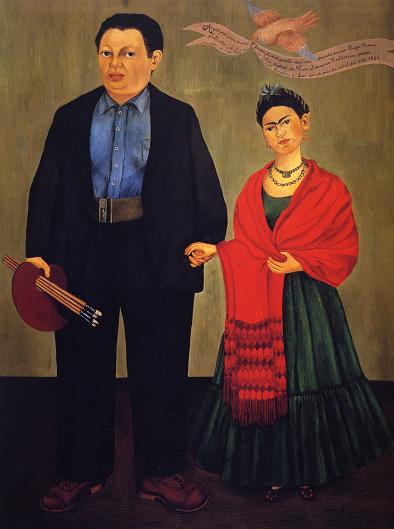
So, you are probably wondering, where do I get my ingredients for cooking in the Northeast? Well, as luck would have it, right when I started getting really serious about Mexican cooking Mexicans became the fastest growing immigrant group in New York City. For a great book on this read, “Mexican New York” by Robert C. Smith (he was my advisor….gotta give a plug, not that he needs it). Of course this fourth wave of Mexicans spread to many places, so by the time I moved to New Haven, there was a growing Mexican community in the next town over, Fair Haven, where I could shop as well.
In NYC I shop on 116th St between 1st Ave and 3rd Ave. This is solidly Spanish Harlem. This area of Manhattan, wedged between historically white upper-class residents and working-class/poor African American Harlem is an ethnic enclave that is seeing a new wave of Mexican immigrants. This area started off as an immigrant Italian neighborhood during the construction of the subway system in the early part of the 1900’s. (they weren’t considered “White” then) Then during the large migration of Puerto Ricans during the 1950’s it started to become “Spanish” (a la West Side Story…).
Now, when I moved to New York, it was really disconcerting that everyone called themselves and others “Spanish”. Nobody in L.A. calls themselves Spanish unless they really think they are from Spain via Mexico. (this is sort of akin to some WASP’s, with no genealogical evidence, who think they came off the Mayflower, RIIGGGHHHT) Growing up I learned that to affect only your “Spanishness” would mean that, in some way, you were rejecting your Mexicanness or in denial that 95% of Mexicans regardless of their skin color are Mestizo, (Mixed, Spanish and Indigenous) even the wealthy. And let’s face it, if your family moved to the East side of Los Angeles, you are not from an elite Spanish family in Mexico. So the first time I was asked if I was Spanish in NYC, I immediately said, “NO!!”. When asked innocently, “What’s the difference between being Mexican and Spanish?” I said snottily, “An ocean and a continent!!!”. Ok, time to chill… I finally learned that when the Puerto Ricans started migrating to New York, no one here knew how to identify them (not white, but not really Black either). The only thing they could recognize is that they spoke Spanish, so they were called “Spanish” (which of course turned to Spic pretty quickly). So out here it’s pretty innocuous to say Spanish people/Spanish food etc for anything from Latin America. As a woman who was raised Chicana I still can’t call myself Spanish, but I accept the term and the rich history that makes up Latino New York.
Anyway…When we got to the grocery stores on now heavily Mexican 116th Street and saw Chorizo in the butchers fridge for the first time I practically hugged the glass and licked it. They had more than one brand too!!! And all sorts of cheeses, chiles, the powder to make Horchata (in different flavors even!!), big bottles of Tapatio, spices in those little baggies that cost a dollar. AND!!! Next door was a taqueria with real pastor, carne asada, lengua too!!! Now New York REALLY has everything.



In NYC I shop on 116th St between 1st Ave and 3rd Ave. This is solidly Spanish Harlem. This area of Manhattan, wedged between historically white upper-class residents and working-class/poor African American Harlem is an ethnic enclave that is seeing a new wave of Mexican immigrants. This area started off as an immigrant Italian neighborhood during the construction of the subway system in the early part of the 1900’s. (they weren’t considered “White” then) Then during the large migration of Puerto Ricans during the 1950’s it started to become “Spanish” (a la West Side Story…).
Now, when I moved to New York, it was really disconcerting that everyone called themselves and others “Spanish”. Nobody in L.A. calls themselves Spanish unless they really think they are from Spain via Mexico. (this is sort of akin to some WASP’s, with no genealogical evidence, who think they came off the Mayflower, RIIGGGHHHT) Growing up I learned that to affect only your “Spanishness” would mean that, in some way, you were rejecting your Mexicanness or in denial that 95% of Mexicans regardless of their skin color are Mestizo, (Mixed, Spanish and Indigenous) even the wealthy. And let’s face it, if your family moved to the East side of Los Angeles, you are not from an elite Spanish family in Mexico. So the first time I was asked if I was Spanish in NYC, I immediately said, “NO!!”. When asked innocently, “What’s the difference between being Mexican and Spanish?” I said snottily, “An ocean and a continent!!!”. Ok, time to chill… I finally learned that when the Puerto Ricans started migrating to New York, no one here knew how to identify them (not white, but not really Black either). The only thing they could recognize is that they spoke Spanish, so they were called “Spanish” (which of course turned to Spic pretty quickly). So out here it’s pretty innocuous to say Spanish people/Spanish food etc for anything from Latin America. As a woman who was raised Chicana I still can’t call myself Spanish, but I accept the term and the rich history that makes up Latino New York.
Anyway…When we got to the grocery stores on now heavily Mexican 116th Street and saw Chorizo in the butchers fridge for the first time I practically hugged the glass and licked it. They had more than one brand too!!! And all sorts of cheeses, chiles, the powder to make Horchata (in different flavors even!!), big bottles of Tapatio, spices in those little baggies that cost a dollar. AND!!! Next door was a taqueria with real pastor, carne asada, lengua too!!! Now New York REALLY has everything.

















